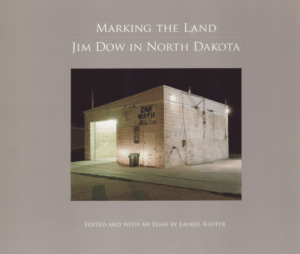April 7 – May 22, 2022
Lecture Thursday, April 21, 6 pm, followed by a reception with the artist.
This event is free and open to the public.
Join us on a twenty-year travel across North Dakota with Boston-based photographer Jim Dow. In 1981, the Museum commissioned Dow to photograph folk art throughout the State, as much of it was too permanent or too large to move for an exhibition. Dow landed in Bismarck the winter of 1981 and captured murals of North Dakota painted on the inside of the brick walls of the State Penitentiary by an inmate serving a life sentence. Shortly after he photographed the murals, the walls were razed. Dow spent numerous years traveling back roads, eating in small town cafes, visiting bars, and drinking coffee in community centers looking for leads on more murals, outdoor sculptures, hand-painted signs, and the things farmers made in their shops over the long winter months.
Nearly 20 years after his last trip to North Dakota, Dow will return to give a lecture and to photograph in and around Grand Forks one more time.
—
Biography
Jim Dow
b. 1942 Boston, Massachusetts
photographer
American
“My interest in photography centers on its capacity for exact description. . . . I use photography to try to record the manifestations of human ingenuity and spirit still remaining in our country’s everyday landscape.” —Jim Dow
Jim Dow’s interest in those places where people enact their everyday rituals, from the barbershop to the baseball park, has guided the path of his photographic career. Dow is concerned with capturing “human ingenuity and spirit” in endangered regional traditions–a barbershop with a heavy patina of town life covering the walls, the opulent time capsule of an old private New York club, the densely packed display of smoking pipes in an English tobacconist shop–all artifacts of a vanishing era.
Dow earned a B.F.A. and a M.F.A. in graphic design and photography from the Rhode Island School of Design in 1965 and 1968 respectively. An early influence was Walker Evans’s seminal book American Photographs (1938). Dow recalls the appeal of Evans’s “razor sharp, infinitely detailed, small images of town architecture and people. What stood out was a palpable feeling of loss…pictures that seemingly read like paragraphs, even chapters in one long, complex, rich narrative.” Soon after graduate school Dow had the opportunity to work with Evans. He was hired to print his mentor’s photographs for a 1972 Museum of Modern Art retrospective.
Dow has taught photography at Harvard, Tufts University and the School of the Museum of Fine Arts, Boston, and his work has been widely exhibited. Among his series is Corner Shops of Britain (1995), which features facades of small family-run businesses: vitrine-like shop windows showcase goods from candy jars to jellied eels. Another series, “Time Passing” (1984-2004), captures North Dakota “folk art” such as rural road signage, handpainted billboards, and ornate gravestones.
Dow first gained attention for his panoramic triptychs of baseball stadiums, a project that began with an image he made of Veteran’s Stadium in Philadelphia in 1980. Using an 8″ x 10″ camera, he has documented more than two hundred major and minor league parks in the United States and Canada.
—
Marking the Land: Jim Dow in North Dakota
A Publication of the North Dakota Museum of Art
Book: Marking the Land
Photographs and descriptions by Jim Dow
Edited by Laurel Reuter, Director and Chief Curator, North Dakota Museum of Art
Design and printing under direction of the North Dakota Museum of Art
Published by the North Dakota Museum of Art in collaboration with the Center for American Places with distribution through the University of Chicago Press
224 pages, 184 color photographs
In 1981 the North Dakota Museum of Art invited Jim Dow of Boston to photograph the State’s environmental folk art—that is, architecture, signage, sculpture, painting, grave markings, working shops, the stuff made by farmers during idle winter months, and all else that decorates the land. Over the course of a year, Dow captured over a hundred images. The initial commission was funded by Target Stores. Then in the late 1990s, he returned to North Dakota to photograph Northern League baseball parks. Dow once again was hooked on North Dakota. The Museum found enough money for Dow to begin anew, but this time with one condition: he could photograph whatever he pleased but Northwest Minnesota should be drawn into the project. From a distance of twenty years, Dow saw the larger themes harbored within the photos: change, the passing of time, the innate creativity demanded of people who live in rural or remote places, and the way humans live lightly on the land and then move on, leaving marks that soon fade away.
Jim Dow’s photographs are among the most important works ever created about North Dakota. They encapsulate the historic change that swept across the Northern Plains in the last half of the twentieth century. Dow literally has captured the traces of people who have died or gone elsewhere. He records an earlier, hand-made existence, churches now sitting empty, the remains of decayed civic life. Described as having the “grandeur and loneliness of ancient ruins,” Dow’s work has been cherished for documenting the disappearing uniqueness of American life.
The book opens with Views of North Dakota, twelve gigantic murals painted on the walls of the State Prison yard half-a-century ago by Charles Oliver. Dow photographed them in their crumbling state just before they were torn down. He closes with Whitey’s Wonder Bar in East Grand Forks—before and after the 1997 flood. With his 8 x 10 large-format camera, he recorded groups of “dinosaurs” or thrashing machines arranged on the hills near Amidon. The World’s Largest Holstein Cow near New Salem. Henry Luehr’s Bull from Buchanan. The hand-forged iron crosses made by Germans from Russia marking the graves near Hague and Zeeland. Sign for Barlow Meats in Devils Lake. Alex Pauluck’s Shop in Belfield. Sig Jagelski’s Jugtown near Auburn. Artist Walter Piehl’s painting studio, his drawing classroom at Minot State, and his Blue Rider Bar. The Goose River Lutheran Church before it burned as well as the State’s grand churches in Warsaw. Dazey, and Strasburg, Eccentric architecture such as the Kite Café in Michigan. Monuments and follies intermingle with one-offs and life-time passions in Jim Dow’s masterpiece, Marking the Land.
Funding for the project has come from Elizabeth Firestone Graham Foundation; the Nathan Cummings Foundation; Archer, Daniels and Midland; Janet Borden, The Hart Family, Emmet and Edith Gowin, The North Dakota Museum of Art Foundation, and the National Endowment for the Arts.
Jim Dow, Boston, Massachusetts,
“Hockey Chalkboard in Locker Room, Jamestown High School. Jamestown, ND. 2/9/81”, 2020.
Print from scanned negative on archival paper.
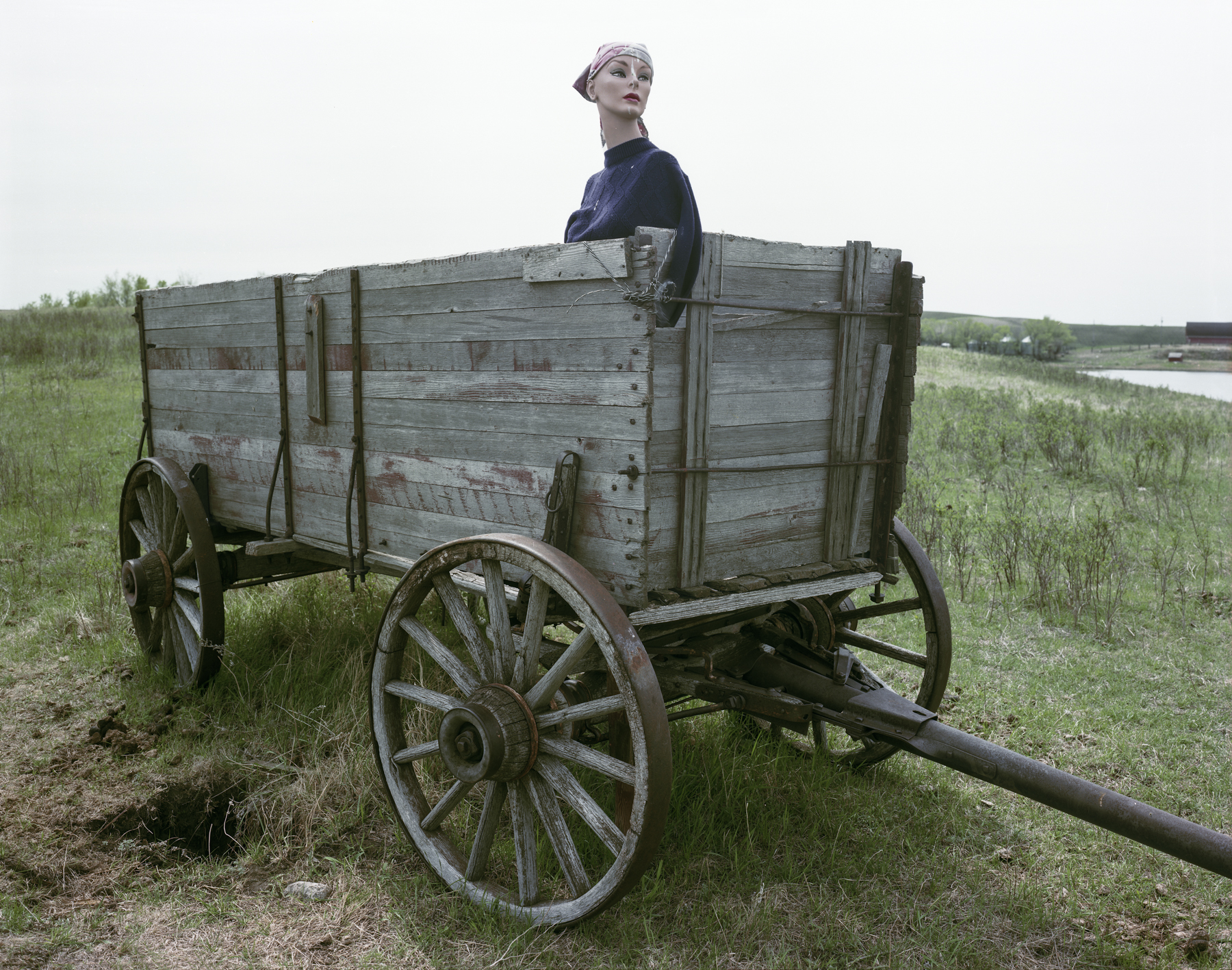
Jim Dow, Boston Massachusetts,
“Mannequin in Wagon on D. Bohl’d Farm. ND 36, Pingree, ND. 5/12/81”
2020
Printed from scanned negative on archival paper.
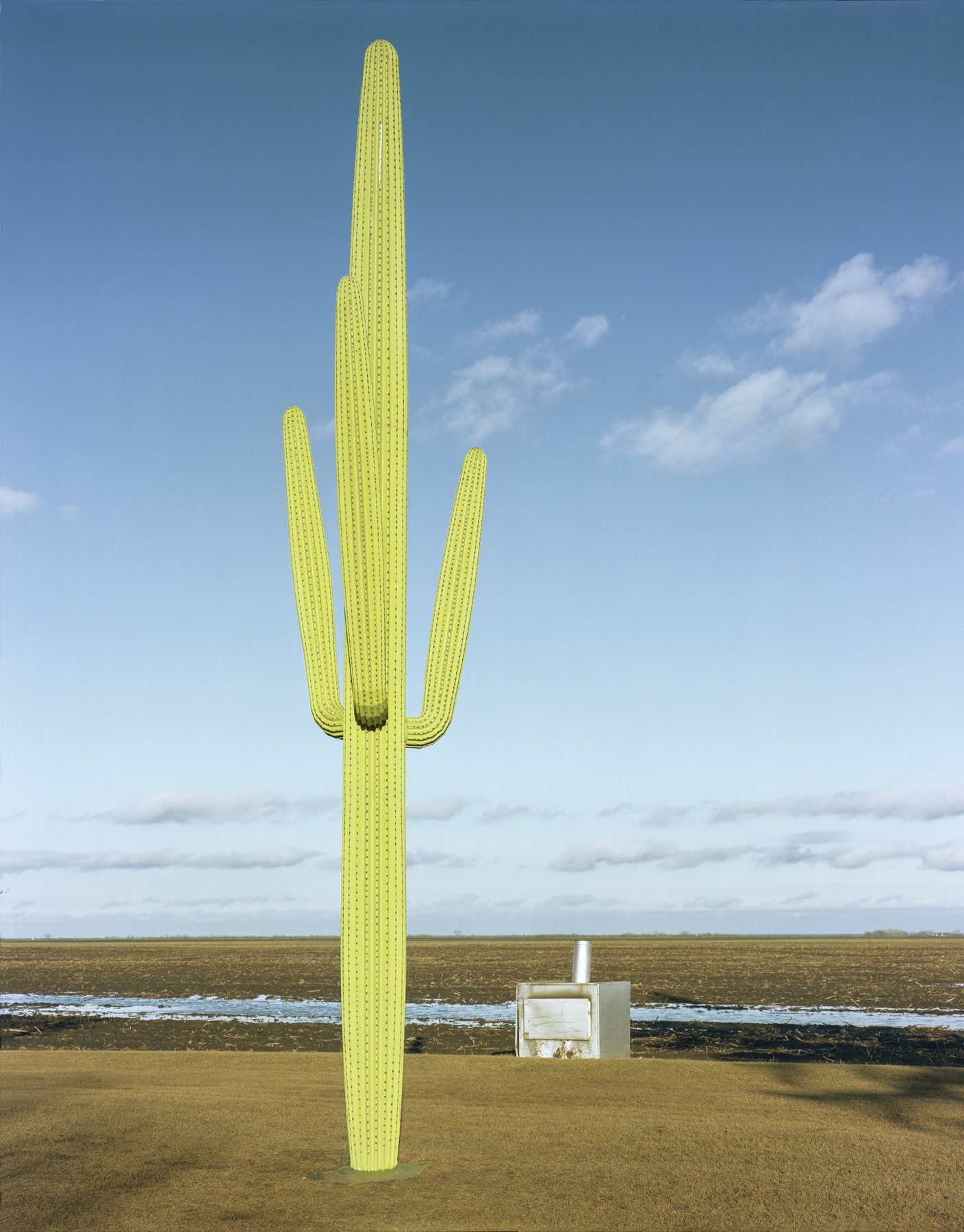
Jim Dow, Boston, Massachusetts,
“Wooden Cactus at Sunset, Henry Frendh’s Farm, Cashel, ND. 2/22/81”
2020
Printed from scanned negative on archival paper.
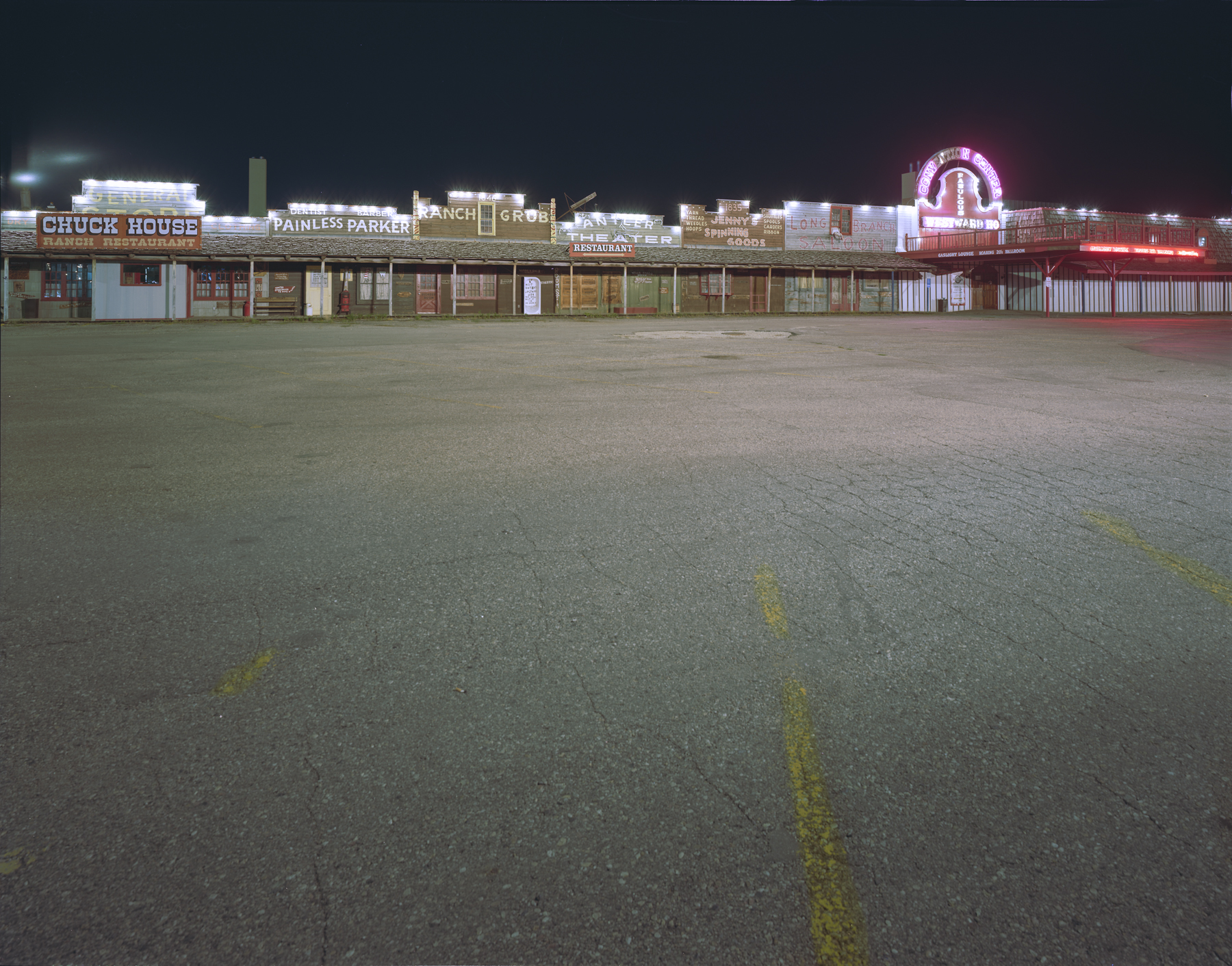
Jim Dow, Boston, Massachusetts,
“The Fabulous Westward Ho Motel & Convention Center. US 2, Grand Forks, ND. 8/1/02”
2020
Printed from a scanned negative on archival paper.
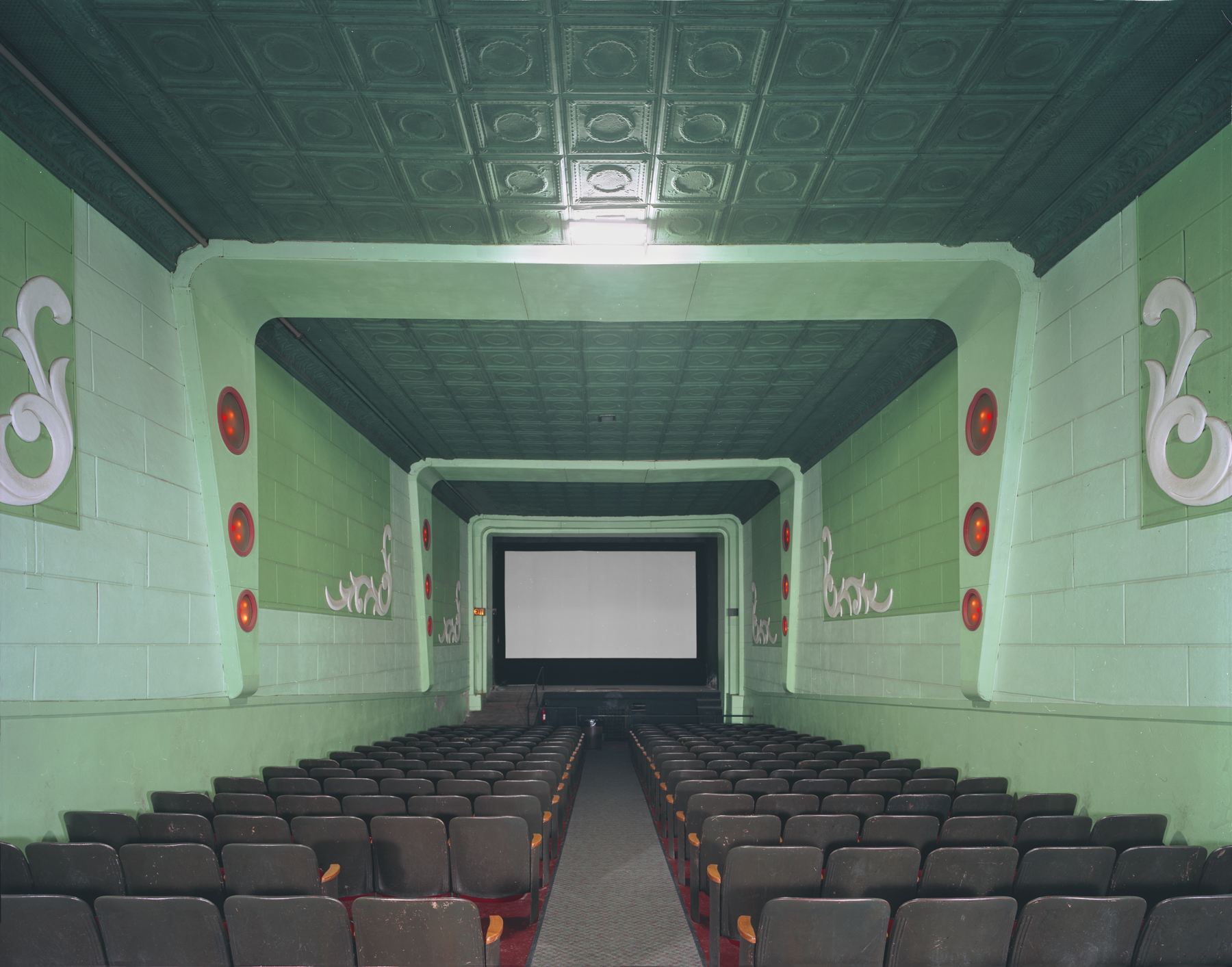
Jim Dow, Boson, Massachusetts,
“Delchar Theater. ND 18, Mayville, ND. 1/18/04”
2020
Printed from a scanned negative on archival paper.
Sponsors
This program is supported by a grant from the
National Endowment for the Arts through the
Community Foundation of Grand Forks,
East Grand Forks & Region.
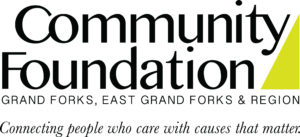
Individual Sponsors
$500 and above
Luise Beringer
$100 – $499
Martin Brown
Capital Resource Management
Ross Rolshoven
Treasure Amdahl
